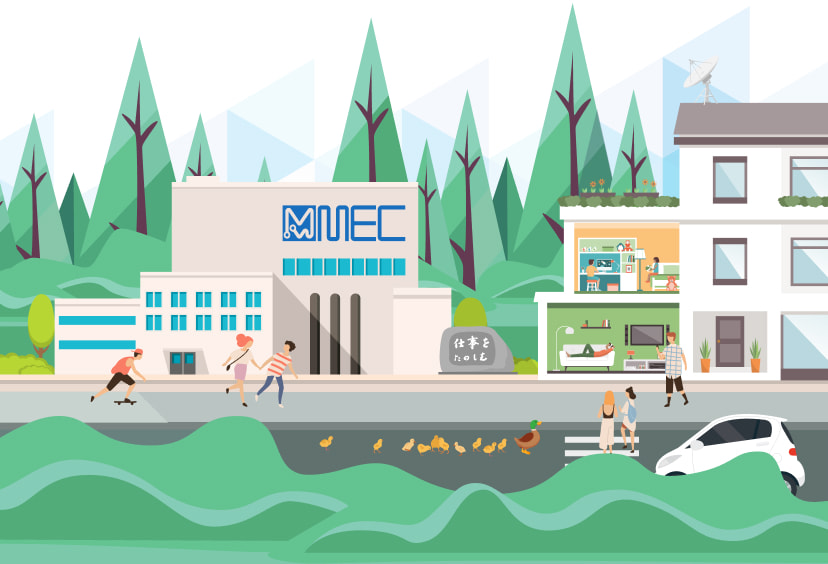Report on Environmental conservation
(Information on sites in Japan)
Relationship between business activities and the environment
The Company develops, manufactures, and sells chemicals for manufacturing electronic substrates. Recognizing that our business activities consume energy and resources, we will work to reduce the environmental burden.
In addition to complying with environmental laws and regulations related to business activities, we provide products that take into consideration energy conservation measures, waste reduction, proper management of chemical substances, and product life cycle. The aim is to make effective use of resources, prevent pollution, and conserve the environment.
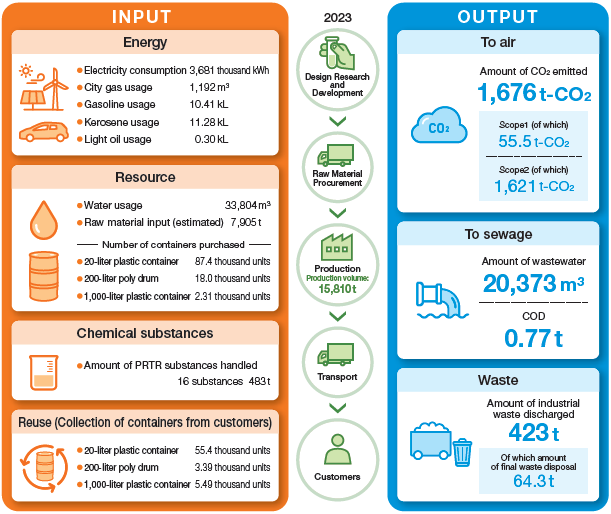
Electricity consumption
The Nishinomiya Factory ceased operating at the end of 2021, so in FY2022, there were two factories in operation, namely the Amagasaki Factory and the Nagaoka Factory.We believe that the increase in electricity consumption is necessary to improve the working environment. However, in order to reduce the environmental burden as much as possible, we generate electricity with solar panels on the roof of the Amagasaki Headquarters. In FY2023, the Amagasaki Headquarters began purchasing renewable energy.
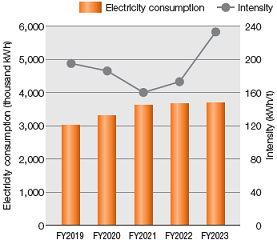
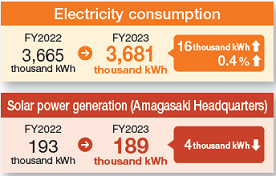
CO2 emission
We have calculated the GHG protocol Scope 1 (fuel) and Scope 2 (electricity and heat) as CO2 emissions. Scope 2 (electrical) accounts for 95%. For Scope 3, we will set the purpose and scope of calculation and carry out calculation and disclosure in stages.
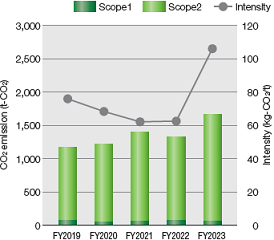
Water usage and amount of wastewater
Because water is a key ingredient in MEC’s products, the amount of water used changes according to changes in the volume of products manufactured. We understand the amount of water used and are aware that we use a large amount not only in our raw materials but also in our manufacturing facilities, container cleaning, and substrate processing lines in our R&D activities. For this reason, we are working to reduce the number of times equipment is cleaned, to introduce automatic container-cleaning equipment, and to reduce wasteful use in substrate processing line work. Water used in manufacturing and R&D operations is treated in wastewater treatment facilities so that it does not exceed the standards, and wastewater treated in line with the regulated standards is discharged into the sewerage system. In fiscal 2022, there were no wastewater discharges that exceeded the standard values.
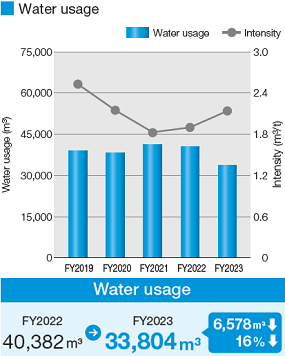
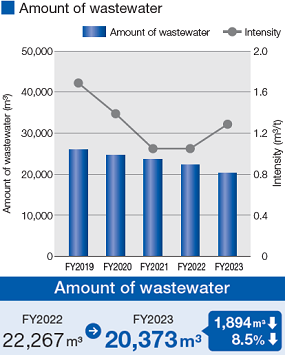
Reuse of plastic containers
In order to make effective use of our limited resources without waste, we collect and reuse plastic containers after using MEC’s products that are no longer needed at our customers. We screen the collected containers to see if they can be reused. Reusable containers are cleaned and reused by the Company and contractors.
Proper disposal of wastes
The amount of industrial waste discharged in fiscal 2022 was 545 tons, an increase of 209 tons (up 62%) from fiscal 2021. Of this amount, specially controlled industrial waste amounted to 269 tons, an increase of 117 tons (up 77%) from fiscal 2021. The final amount of disposed industrial waste was 94.6 tons. In response to the closure of the Nishinomiya Factory, which finished operating at the end of December 2021, the amount of industrial waste discharged increased by approximately 100 tons, and it also increased by another 100 tons due to cleaning for the renewal of wastewater treatment facilities at our factories and the disposal of unnecessary chemical solutions, resulting in a total increase of 209 tons. The Nishinomiya Factory will continue to discharge industrial waste in FY2023 (January through May), but this is expected to decrease significantly. We will continue working to reduce the amount of industrial waste generated and to reduce the amount of final disposal by thoroughly segregating the generated industrial waste.
Environmental Accounting for FY2022
(Information on sites in Japan)
Table Environmental conservation cost in FY2022
Development standards
- Data gathering period: 12 months from January to December 2022.
- Scope: MEC CO., LTD. [Amagasaki Headquarters (Head Office / R&D Center / Amagasaki Factory), Nishinomiya Factory, Nagaoka Factory, Tokyo Sales Office, Higashi-hatsushima R&D Center.]
- "Environmental conservation cost" only targets cost whose objectives are clearly related to environmental conservation activities.
- "For the research and development cost", costs which can be categorized into themes are individually processed, while costs which cannot be directly categorized are distributed in proportion based on theme-specific work hours.
- "The amount of the cost" includes depreciation costs and maintenance and management costs of facilities, as well as labor costs which are used for the purpose of environmental conservation.
Click here for various numerical data.
ESG Date